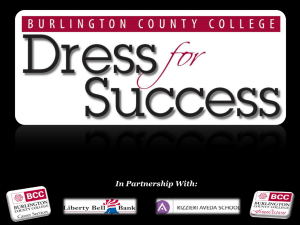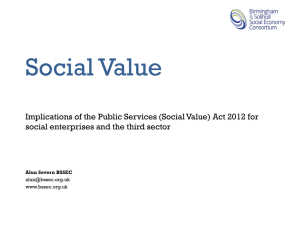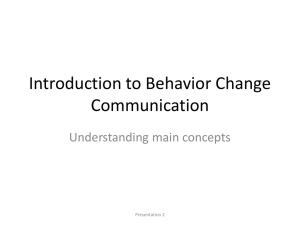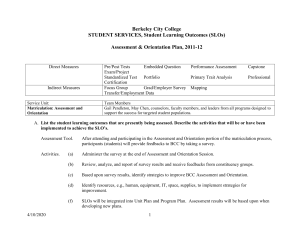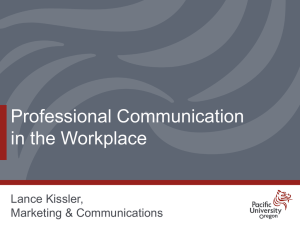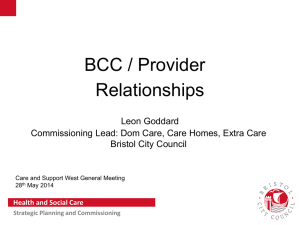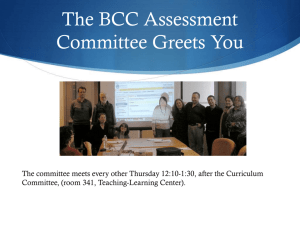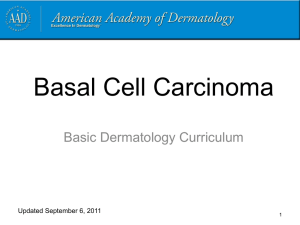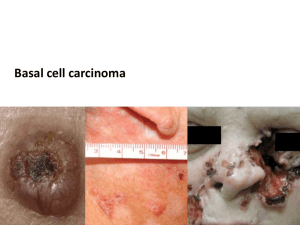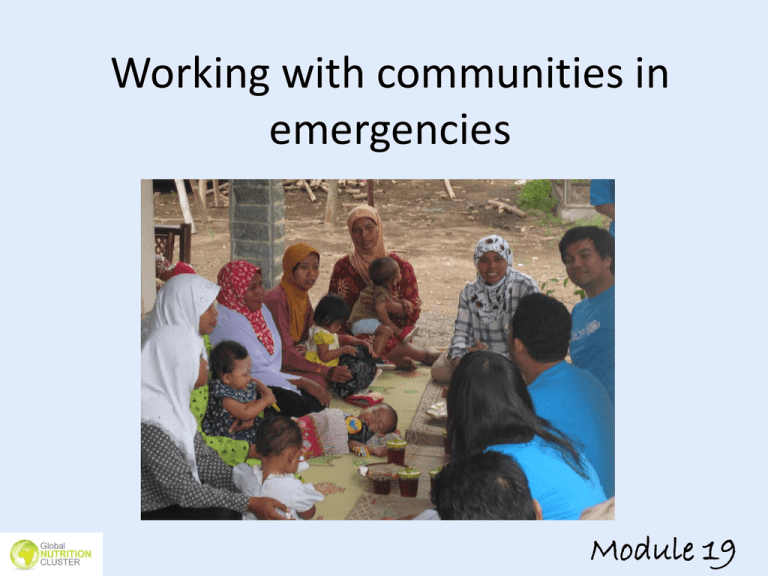
Working with communities in
emergencies
Module 19
Objectives of the Session
• Be aware of why it is essential to work with communities in
communities
• Be aware of the types of nutrition issues that can arise in
emergencies that can be addressed through BCC
approaches
• Understand the importance of involving target
communities in emergency nutrition response
• Know about the range of BCC approaches that can be used
in different situations
• Be aware of the main methods of nutrition communication
in an emergency.
2
Working with communities
• All emergency programming needs to work with affected community
and this relies on both good relationships and effective communication
• Understanding of cultural norms and how things get done is important
• Mutual respect is required
• Humanitarian workers need to show respect to community leaders and
members
• This could be time consuming but time well invested
• Working outside of community norms is likely to affect ability to be
effective and does not meet professional standards of practice
• Humanitarian agencies dependent on short emergency funding cycles
and high staff turnover rates may face particular difficulty in
integrating effectively with and learning from local people.
3
Understanding the community
• Powerful members, such as administrative or religious
leaders, can be very helpful to an agency hoping to gain
the trust and support of a community
• Established community groups and organisations, such as
women’s groups can also be influential and may have similar
interests or concerns to your agency’s mandate
• It is important to ensure that those affected are directly
involved in all stages of the response
• The most marginalized and vulnerable groups tend to:
– have the most needs
– Have the least involvement in programming
• It is vitally important that their views and
opinions are sought out and considered
4
Understanding the community (2)
•
•
In emergencies, the demographic of an area
can be seriously distorted as people adopt
various coping strategies, eg:
– Food shortage - the able bodied may migrate,
either permanently or seasonally, in search of
employment, aiming to send home remittances
– Insecurity – professionals may take their entire
families to safer environments leaving
communities bereft of qualified health
personnel
– Refugee populations may travel as ‘villages’ and
host a spectrum of skilled personnel including
‘local’ leaders and administrative structures
– Or refugee populations can be fairly
homogenous, with disproportionately high
numbers of one sex
• some family members stay behind to
protect assets
• or leave to seek employment elsewhere.
It is also helpful to understand how the community
functioned before the emergency.
2
5
Sphere standards 2011
Common standard 1: People centred humanitarian response
People’s capacity and strategies to survive with dignity are integral to the
design and approach of the humanitarian response.
Agencies should act to “progressively increase the disaster affected
people’s decision making power and ownership of programmes during the
course of a response.”
Key indicators
Project strategies are explicitly linked to community-based capacities
and initiatives
Disaster-affected people conduct or actively participate in regular
meetings on how to organise and implement the response (see
guidance notes 1 and 2)
The number of self-help initiatives led by the affected community and
local authorities increases during the response period (see guidance
note 1).
Agencies have investigated and, as appropriate, acted upon complaints
received about the assistance provided
6
Promoting community participation
• Community participation is promoted by:
– establishing clear lines of communication
– having a good understanding of the community (all its members)
– working together to identify priority needs and activities
• If feasible, work through established community
organizations, such as women’s groups, village development
committees and farming associations, as the setting up of new
groups has proved to be less sustainable
• Transparency is a key criteria in working with communities
2
7
Promoting community participation (2)
• Communication with the community should include:
– Listening to the priorities and needs of a range of community
stakeholders including women and men
– Outlining the mandate, aims, and proposed activities of the
agency as well as making clear what the agency cannot address.
– Explaining the time frame, exit strategy and limitations of the
agency
– Negotiating the roles and responsibilities of the host community
– Provision of information for important programming events
such as food distributions, surveys and meetings.
8
Working with volunteers
• Volunteers are often necessary for community work, but a
community’s resources - time, money and people -can be
scarce and its willingness and ability to provide volunteers can
be limited
• The main issue is about motivation of the volunteers
– Cash or in-kind incentives both have advantages and disadvantages
that need to be considered carefully
– If remunerated in cash, should be in line with local pay rates
9
Introduction to Behaviour Change Communication
(BCC)
• BCC is a programming approach that works with communities to
improve their nutrition and health outcomes.
• Uses an evidence based communication strategy to change
behaviours
• Various BCC approaches are undertaken by different agencies to
support optimal behaviour and communicate effectively - requires a
lengthy reiterative process
• Nutrition BCC has recently been recognized as an important part of
emergency nutrition programming
• Nutrition BCC can be widely used and can be helpful
– To promote good behaviour and to discourage poor practices
– To familiarise communities with the use of new products or services
– For community sensitisation and investigating barriers to service uptake
•
Well designed BCC activities can increase the effectiveness of the
emergency response
• This process uses a variety of techniques to repeat, familiarise and
reinforce the message
10
Introduction to BCC (2)
•
UNICEF has produced a handbook on BCC specifically for use in emergencies
– It outlines general principles for BCC
– provides detailed specific guidance for topics e.g. promotion of breast feeding
•
•
•
AED defines BCC as “The strategic use of communication to promote positive
health outcomes, based on proven theories and models of behaviour change”
AED has established the “BEHAVE” framework as a clear and simple tool
designed to aid BCC
It is based on the principle that asking the right questions leads to the right
answers through defining:
– The target audience, by asking ‘who are you trying to reach?’
– The desired action, by asking ‘what do you want the target audience to do?’
– The determinants or what supports/prevents the action, by asking ‘what are
the factors that influence or could influence the behaviour?’
– The interventions, by asking ‘which actions will be most effective in addressing
the factors?’
11
Introduction to BCC (3)
• Characteristics of successful approaches to nutrition BCC:
– Recognise that people have strong and varied beliefs and that
approaches should not be based on assumptions about people’s
behaviour
– Based on observed behavioural practices, not on anecdotal
stories or preconceived ideas
– Base it on a clear assessment of the nutrition problem, analysis
of its causes and a carefully thought out plan of action to
address it
– Include two-way processes so that those affected by disasters
have opportunities to express their views, priorities and
concerns
– Take into account the motivations of particular population
groups and work with communities and community leaders
– Target a specific group and communicate a clear message
– Provide information to allow a reasoned choice.
12
Steps for developing a BCC approach in emergency
programming
• Step 1: Assess both context and your agency’s place
within it
• Step 2: Define the nature of the nutritional problem
• Step 3: Identify the target group, objectives and
indicators for monitoring
• Step 4: Understand how individual or population
group views the problem, and explore barriers to
change
• Step 5: Develop and test the behaviour change
strategy/messages
• Step 6: Choose the right channels for communication
13
Developing a BCC approach in emergency programming
• Step 1: Assess both the context and your agencies place
within it
– This includes the role of government/authorities, the
national/local procedures and formalities, cultural norms and the
relationship that your agency has with the community.
– It is important to start consultations with key members of the
community who can influence their community at the outset
• Step 2: Define the nature of the nutritional problem
– This can be in terms of who is affected, what is the nature of the
problem, how many and why they are affected.
– Participatory assessment methods can be helpful.
– Is it the entire population or a sub-group such as women with
young children, fathers or influential leaders?
14
Developing a BCC approach in emergency programming
• Step 3: Identify the target group, define objectives and set
indicators for monitoring
– A consultation process throughout planning will help in the
development of a common approach with the community and will
reduce misunderstandings or conflicts with stakeholders
•
Step 4: Understand how the individual or population
group views the problem and explore barriers to change
– This step considers ‘why’ people are affected and seeks a deeper
level of understanding
– Participatory methods are used with the community to develop
understanding of why people behave the way they do
– The focus should be on a problem that the agency and community
have identified together
15
Developing a BCC approach in emergency programming
• Step 5: Develop and test the behaviour change strategy
and/or message
– The message should be context specific, culturally sensitive and
tailored so that it minimizes negative feedback or stigma
– Testing the strategy provides important information that can be
used to refine approaches
• Step 6: Choosing the right channels for communication
– This step is based on the objective of the BCC activity as well as
considering costs, availability of skilled human resources and
accessibility of the beneficiaries to the proposed medium.
16
Practical applications of BCC in nutritional emergencies
• Promotion of good and avoidance of undesirable
behaviour (examples)
– Promotes recommended feeding and care practices such as
exclusive breastfeeding
– Aims at avoiding the use of bottle feeding if possible
– Aims at protecting positive behaviours: breastfeeding is
sometimes disrupted in emergencies because of
misconceptions that in emergencies mothers can no longer
breast feed adequately due to stress or inadequate nutrition
– Promotes the consumption of specific food against
micronutrient deficiencies
17
Practical applications of BCC in nutritional emergencies
(2)
• Familiarisation with the use of new products or services
(examples)
– In many emergency settings, new resources are introduced
such as a new type of food or health intervention.
– The acceptability of a new resource in an emergency setting
depends on several factors including its quality, status and
similarity to known resources
– The introduction of new resources can be incorporated in
BCC even in a very complex and challenging emergency
affected environment
– A variety of communication channels can be used including
cooking demonstrations, publications and advertising on
broadcast media
18
Practical applications of BCC in nutritional emergencies
(3)
• Community sensitisation and investigating barriers to
service uptake
– Nutrition BCC can be used to enhance the effectiveness of
a programme by increasing programme uptake and
promoting the appropriate use of goods and services
– To enhance the nutritional benefit of cash distribution, a
campaign may include key messages on the cultivation of
fresh fruit and vegetables, the consumption of
micronutrient-fortified foods or the purchase of
micronutrient-rich foods from local markets
– Also used for increasing CMAM programmes coverage
19
Participatory assessment tools
• Participatory assessment is a method of situational
assessment that engages with the community
• The specific tools chosen will depend on context,
cultural preferences and on how people normally
receive/obtain information as well as on availability of
resources and time and the nature of the problem
being investigated:
– Individual interview:
• In-depth interview
• Key informant
• Semi structured interviews (SSIs)
– Group interview
•
•
•
•
Structured group interviews
Focus group discussions (FGDs)
Community meetings
Spontaneous group discussions
20
Participatory assessment tools
• Other tools can be:
–
–
–
–
Direct observation
Mapping
Seasonal calendars
Problem ranking/sorting
21
Main methods of communication
• The knowledge and skills of local staff or influential community
members who can be involved will be an important factor in
determining the method and success of the intervention
• To get a message across effectively, different channels of
communication may need to be used for different target groups or
for different circumstances
• Information alone, eg, only using IEC visual materials, may result in
increased awareness about a nutrition-related subject but may
have limited impact on people’s practices or behaviours
• To stimulate shared learning through dialogue, participation and
discussions with affected communities in emergencies helps
establish a sense of ownership of the processes in the different
phases of the emergency
22
Main methods of communication (2)
• Face-to-face or interpersonal communication is effective
but only reaches a low number of people
– It is good for targeting specific small groups (school
children, parents of malnourished children, etc.)
– It is made more effective by the use of printed materials
and practical demonstrations
23
Main methods of communication (3)
• Group communication are good to reach larger number of
people
–
–
–
–
They should focus on short and positive messages
They should make use of existing groups in the community
They promote exchange of experiences and demonstration.
They can take advantage of existing social forum such as religious or
political meeting, women associations meetings, etc.
2
24
Main methods of communication (4)
• Mass media communication can include radio, cinema,
internet, etc. It reaches the largest number of people
– Messages can be repeated regularly to large audiences,
but may also marginalise those with no access to mass
media
– Risks exist for misinterpretation as no question can be
asked
– Messages are broad and do not take into account local
specifics
25
Main methods of communication (5)
• Small media can be the most practical, useful and
effective way to reach affected people during an
emergency
– Includes community radio, community bulletins or flyers
and loudspeakers or megaphones
– With community coordination and support, it is possible to
plan, produce and disseminate messages with affected
community members
– Messages can also be relayed through village singers,
village announcers, traditional storytelling, puppet theatre,
song and dance, etc.
– These forms of communication combine entertainment
with education
26
Main methods of communication (6)
• Participatory drama has been used in emergencies and
allows the affected community to be directly involved in
the drama itself which gives individuals greater control
and helps them to explore issues and possible solutions
– It stimulates critical thinking, stresses process rather than
outcomes
– A community can prioritise their needs
– It develops a sense of community ownership
– It offers a creative approach to deal with distress and
trauma and thus supports healing among affected
community members
27
How to design print materials
• The number one principle is community engagement
– Involve affected community members in all phases of
material development
• Choose a simple, logical design and layout as follows:
–
–
–
–
Present only one message per illustration
Make materials interactive and creative
Limit the number of concepts and pages of materials
Messages should be in the sequence that is most logical to
the group
– Use illustrations to help explain the text
– Leave plenty of white space to make it easier to see the
illustrations and text
28
How to design print materials (2)
• Use illustrations and images:
– Use simple illustrations or images
– Use appropriate styles: photographs, complete drawings of figures and
line drawings
– Use images that represent objects and situations familiar to the
community
– Use realistic illustrations
– Illustrate objects in scale and in context whenever possible
– Don’t use symbols unless they are pre-tested with members of the
affected community
– Use appropriate colours
– Use a positive approach
– Use the same language and vocabulary as your affected community
– Repeat the basic message at least twice in each page of messages
– Select a type style and size that are easy to read
– Use upper and lower case letters
29
Key messages
•
•
•
•
•
A good understanding of the community, its context and its concerns are key
to the design of relevant, culturally acceptable and effective projects
Working with communities is core to the Sphere Minimum Standards in
Disaster Response
The motivation and retention of staff, both paid and volunteer, needs careful
consideration and should be in line with local rates of pay
An understanding of local nutrition practices and the communication of
appropriate information increases the effectiveness of an emergency response
BCC activities should have evidence based content that is targeted, context
specific and implemented via a range of locally understood communication
channels. They can be widely used in nutrition programming
– To promote the use of good behaviours
– To familiarise communities with the use of new products or services
– For community sensitisation and investigating barriers to service uptake.
30

